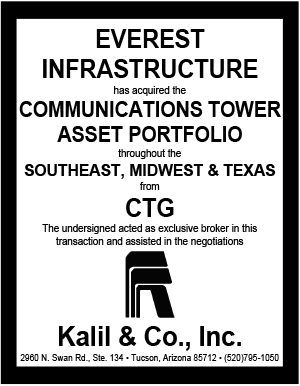
Last fall I was honored to do a webinar for IBO, during which two important questions were posed:
How do you handle competitors who are lowering their rates in a recession?
Don’t make it an either/or conversation. Show the advantages of buying your board AND your competitors board with an illustration of how much more efficient an OOH ad purchase is than any other media.
Confirm that the specs for the units you are comparing, and the terms of the deals are the same.
Advertisers don’t want “billboards” they want what billboards do. Selling is uncovering the “what”.
Price cutting and price advantages are usually a temporary thing. Rate-cutting companies are going to have to raise their rates. Explain to the prospect: “you have to be suspect of anyone who’s trying to sell you billboards without finding out what your needs are.” Be prepared to take them through some high-gain questions to drill down to their needs.
Sell your “Client Success System” as a competitive advantage. It’s the process you use to assure client satisfaction. (The Ultimate OOH Sales Guide is a great source for that system. You can order yours at: https://billboardinsider.com/publications/)
Explain to your client that you don’t set your rates, the market sets your rates based on supply and demand. Because you are getting better results for your advertisers, your demand/rates are higher.
To the advertiser they may be overpaying at $500. Do a cost per thousand ad impressions analysis. Illustrate that the competitors cheaper board may be more expensive than yours when looking at the cost per thousand impression delivery. A rep I worked with was selling a unit for $750/week in the center of town and their competitor was selling for $500 on the edge of town. My rep had the price advantage given it was a much lower cost per thousand ad impressions that the competitor.
Elevate yourself to a “sustaining resource.” Level 1 selling is all about specs, pricing, and RFP fulfillment; it’s a bare bones transactional sale. Levels 2-4 are about your ability to becoming a resource for the client. The more you can move up those sales levels, the more you insulate against rate pressures. (For more information about the 4 levels of selling and how you can evolve, email me at: KevinJGephart@gmail.com).
How do I get a client to commit long-term when they are currently only buying sporadically?
Brand your annual contract as a “Client Control Program.” By signing long term, the client is in control: controlling the price, the availability, the right of first acceptance/renewal, and their competitor’s access to that location. Every piece of OOH inventory is exclusive; only one advertiser can be on a unit at a time (with the obvious exception of digital). Radio, TV, and print all have more inventory to sell if a slot gets sold; they seldom can put availability pressure on an advertiser.
Get management approval to sell the “cancellation.” Promise a 60-day cancellation clause if they want to get out of the contract. 60 days gives you enough time to resell the inventory and it puts a “perceived” lock on the advertisers. When an advertiser signs a long-term contract with a 60 day out, you’re going to get more sold weeks from them than if you try to go month to month.
Take the reach pledge. “I will never show reach percent (the percent of the market your client’s ad is reaching) without also showing the actual number of people reached.” If you quote a reach number of 8% of the market for your proposal, a local-direct advertiser will understand little about that stat. But if you show them the actual number of people they reach, now they see a tangible audience delivery. The total number of people reached is almost secondary to the fact that it is a specific number. You’ve now translated the OOH jargon to understandable street level terms. **
Impressions don’t buy things, people buy things. When you show prospects 8% reach, explain how that translates to 7100 people in a XXXX week period. Don’t be afraid the advertiser will think the number isn’t big enough. It is bound to be on par with their other media. Plus, if they want more reach, you can craft a bigger program.
CAUTION: Don’t confuse your advertisers with data. The more technical you get, the more your advertiser thinks they are not qualified to buy billboards and they’ll want to hire an ad agency. At the end of the day, they just want customers.
** (Calculate the number of people reached by multiplying the reach percent by the actual population of the targeted demographic in your proposal. That’s the number of actual people/prospects the program will deliver. If you have questions about this process, contact me at KevinJGephart@gmail.com)
[wpforms id=”9787″]
Paid Advertisement


















Another GREAT article, Kevin. Thanks for the tips!